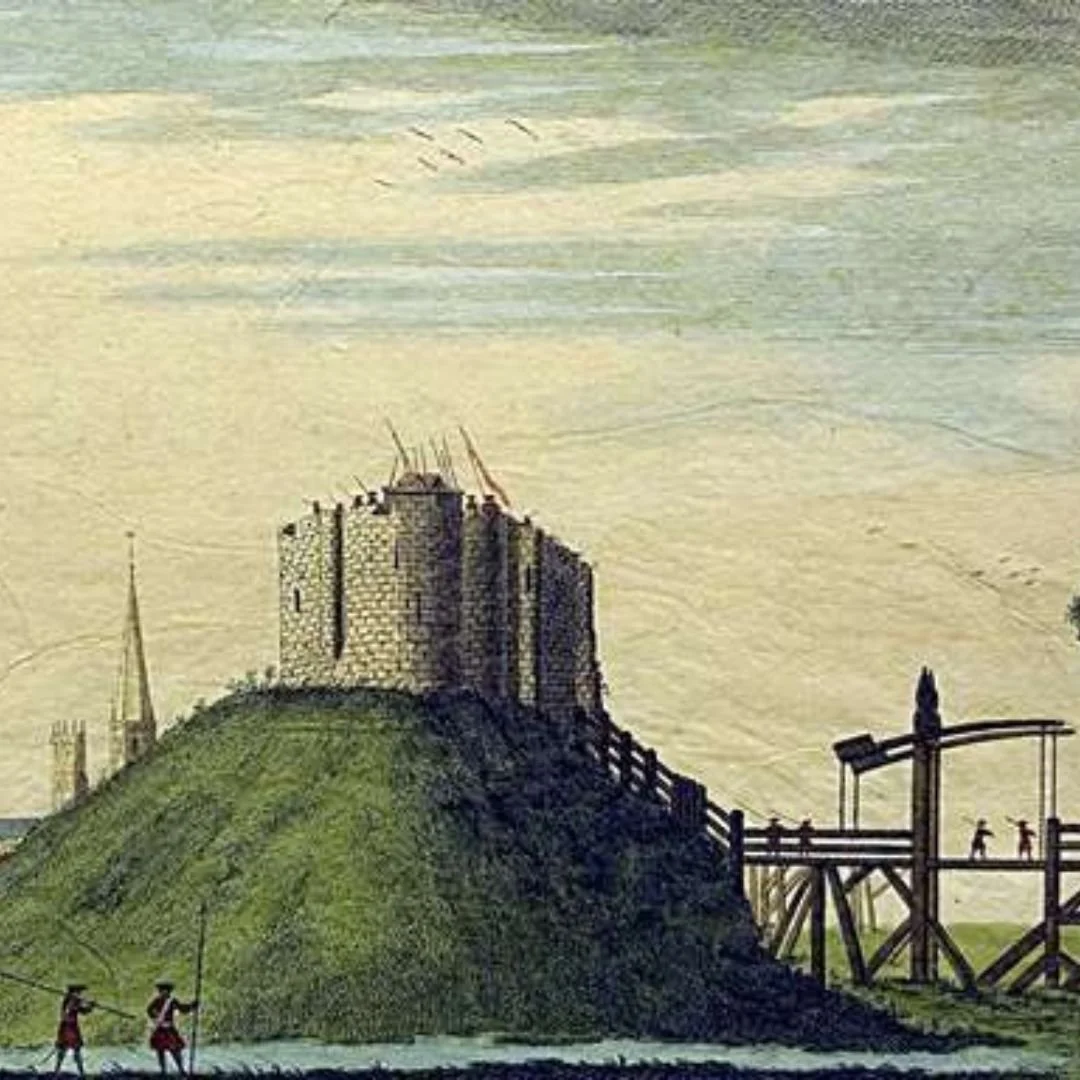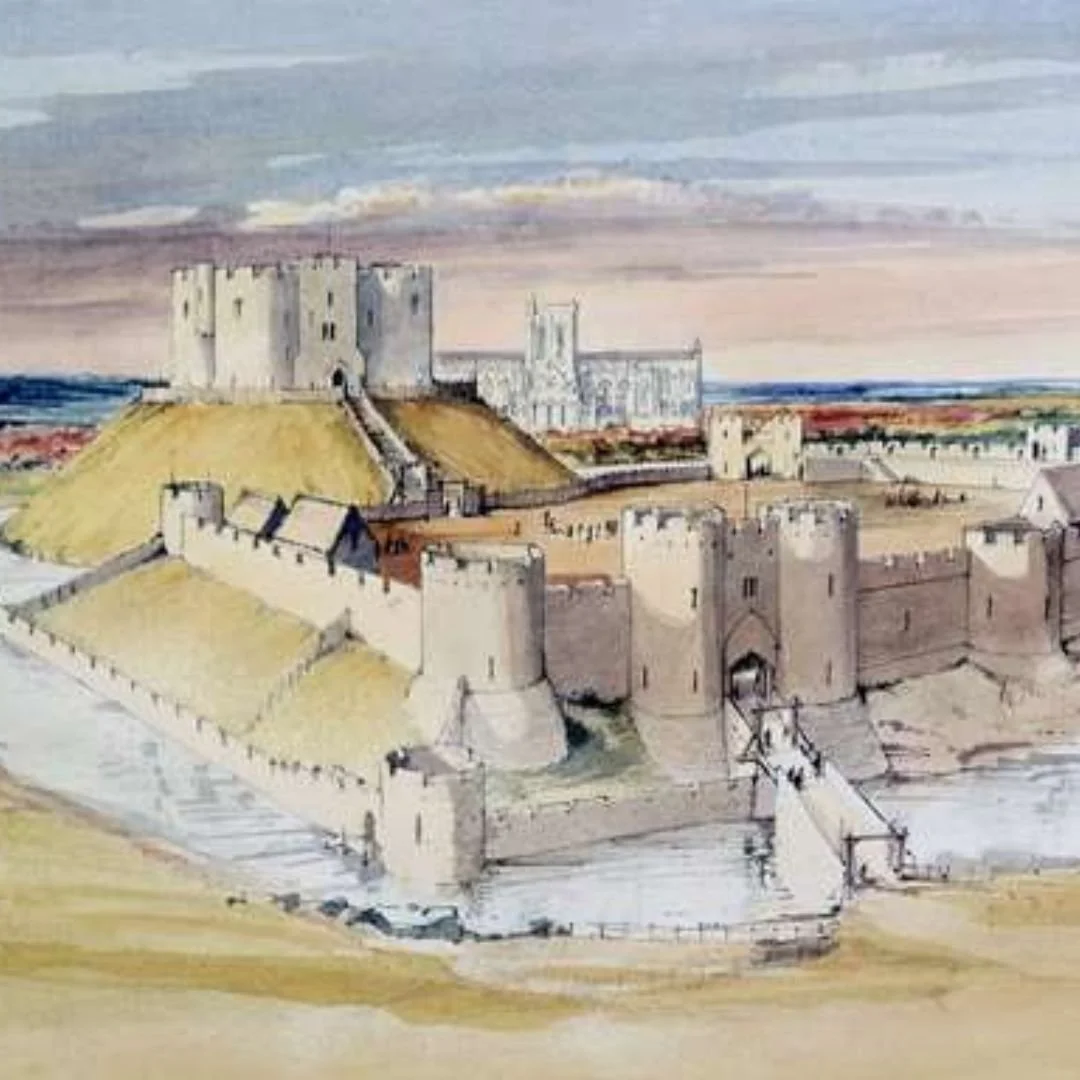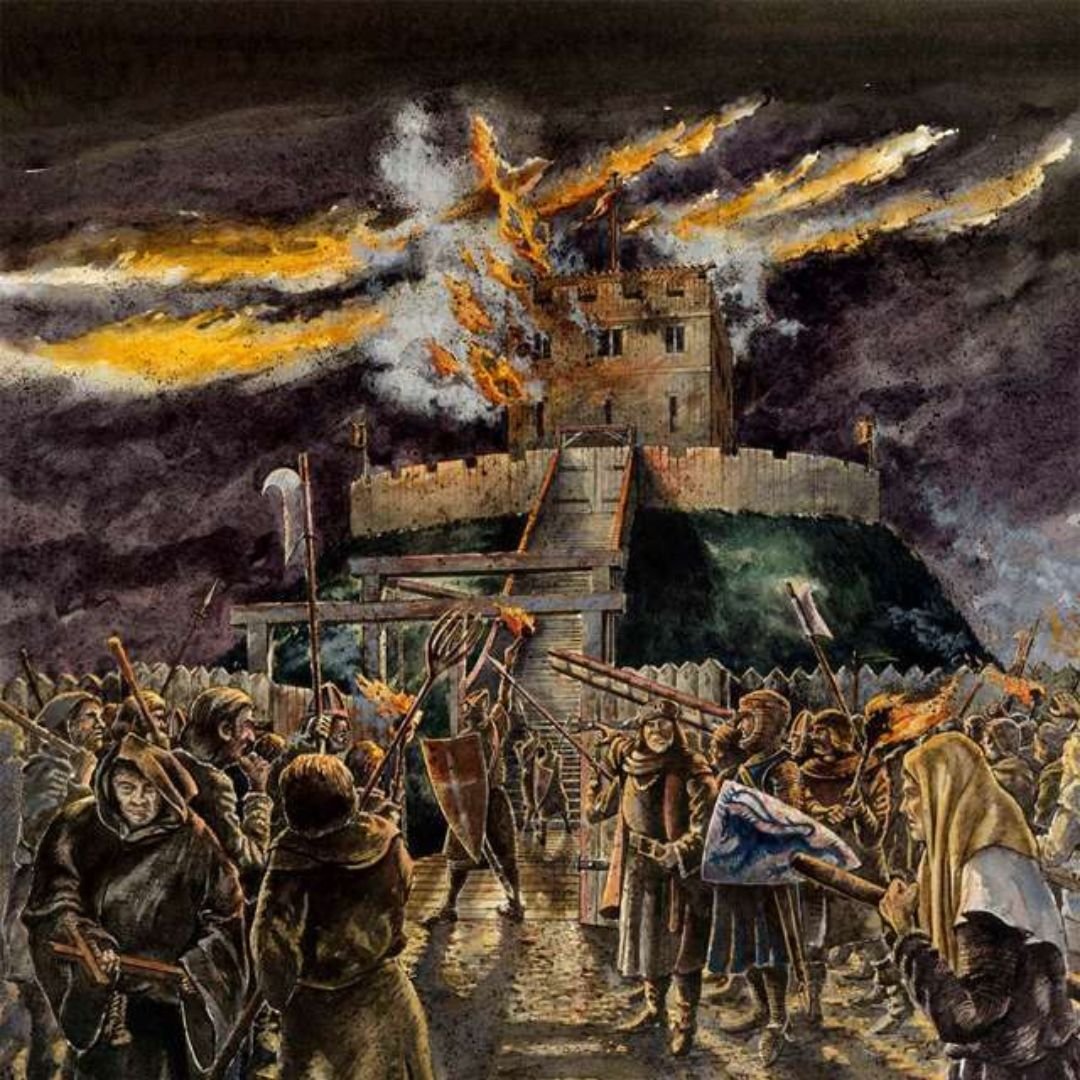Clifford’s Tower: Largest Remaining Building Of York Castle
Clifford’s Tower is the largest remaining building of York Castle, northern England’s greatest medieval royal fortress.
With sweeping panoramic views of York and the surrounding countryside, it isn't hard to see why Clifford's Tower played such a crucial role in the control of northern England.
The first castle on the site was built by William the Conqueror in 1068 following the Norman conquest of York.
It was twice burned to the ground, before being rebuilt by Henry III in the 13th century.
Credit: English Heritage
The tower takes its name from one grisly incident in its long history, when Roger de Clifford was executed for treason against Edward II and hanged in chains from the tower walls.
According to English Heritage, it was the setting for one of the most notorious events in English history: the mass suicide and massacre in March 1190 of York’s Jewish community.
Tensions between Christians and Jews had been increasing throughout England during the 12th century, partly because many people were in debt to Jewish moneylenders and partly because much crusading propaganda was directed not only against Muslims but also against Jews.
Anti-Jewish riots in several cities followed the coronation of the crusader king Richard I in 1189, and a rumour (untrue) was put about that he had ordered a massacre of the Jews.
In York, as described by William of Newburgh and other contemporary chroniclers, about 150 people from the Jewish community were given protective custody in the royal castle, probably the site of Clifford’s Tower.
Somehow, though, trust between the royal officials and the Jews broke down. The officials, finding themselves shut out from the tower, summoned reinforcements to recapture it.
These troops were joined by a large mob, which soon ran out of control, incited by both anti-Jewish preachers and local gentry eager to escape their debts.
On 16 March, the eve of the Sabbath before Passover, when the Jews realised that there would be no safe way out for them, a rabbi urged his fellow-inmates in the tower to commit suicide rather than fall into the hands of their persecutors.
Heads of households killed their own families before killing themselves, and the wooden tower itself was set on fire.
According to several accounts a number of Jews did survive and came out of the tower under an amnesty, only to be murdered by the attackers.
A plaque at the base of the mound, commemorating these events, was installed in 1978.
Though Jewish life did in fact revive in York within a few years of the massacre, it came to an end a hundred years later, in 1290, when Edward I expelled all Jews from England.
This time their exile lasted until the 17th century.
The tower burnt down in 1190 was rebuilt very shortly afterwards. Further repairs and rebuilding, some in stone, took place in the castle during the early 13th century.
Then in the middle years of that century, as war with Scotland loomed, King Henry III decided to build a completely new stone tower on the mound.
A writ of March 1245 may refer to the construction of the tower. It orders Master Henry the mason and Master Simon the carpenter to advise the sheriff on strengthening the castle's defences.
Master Henry is often identified as Henry of Reyns, master mason of the new abbey at Westminster.
At the abbey, as at Clifford's Tower, English architectural detailing was applied to a plan influenced by French prototypes.
Documentary sources show that construction was intermittent and the tower was probably not finished until the 1270s, possibly not until the 1290s.
After a brief period when Clifford’s Tower passed out of royal ownership, in 1643 it was occupied again by a royal garrison during the Civil War.
The building was re-roofed and re-floored, apparently at the behest of Queen Henrietta Maria, creating storage rooms for ammunition and a gun platform on the roof.
The forebuilding was largely reconstructed.
The city fell to Parliamentarians the following year.
The tower continued to be occupied by a garrison of between 40 and 80 men and it may also have served occasionally as a prison.
The Quaker George Fox was imprisoned here for two nights in 1665, on his way to Scarborough Castle.
The garrison’s dissolute behaviour caused discontent among the citizens of York, who called for the demolition of the tower, scathingly nicknamed ‘the Minced Pie’.
On 23 April 1684 the interior was partly gutted by fire, allegedly as a result of the firing of a ceremonial salute for St George's Day.
Destruction was not total, though, and parts of the building remained in use for storage, while cannon were still positioned on the roof.
By 1699, however, when Clifford’s Tower was released to freeholders, sketches of the interior by Francis Place show that it was completely roofless.
Today, this historic buildings is open to the public and it’s maintained by English Heritage.
A new roof deck gives unrivalled views over York's historic skyline, with its medieval buildings and famous Minster.
Inside, new walkways and staircases have opened up parts of the tower that have been off-limits for centuries, and immersive soundscapes and stories are bringing the tower’s turbulent history to life like never before.
You can book tickets in advance via the English Heritage website for just £8.50.
Clifford's Tower is on Tower Street, immediately opposite the York Crown Court and a stone's throw from Fairfax House and the York Castle Museum.
It is well signposted from the city centre - and it is surrounded by a huge pay and display parking area.
There is a minimal charge for admission, but English Heritage members are admitted for free.
Someone who recently visited the tower said: “Really lovely little castle. There isn't a huge amount to see it won't take you long to look around it but it's still worth alook I think.
”Bit expensive to get in but worth it to keep history alive. Views from the top are lovely.”
Another person added: “Wonderfully warm and welcoming staff. Lovely views, obviously some steps are a bit tricky due to the age of the building but it's a quiet little haven from the rest of the city.
”We're an autistic family and I found the staff very clear, friendly and accepting.”
If you’d like to visit, the address is: Tower Street, York, Yorkshire, England, YO1 9SA.
If you enjoyed this blog post, please follow Exploring GB on Facebook for daily travel content and inspiration.
Don’t forget to check out our latest blog posts below!
Thank you for visiting Exploring GB.






















